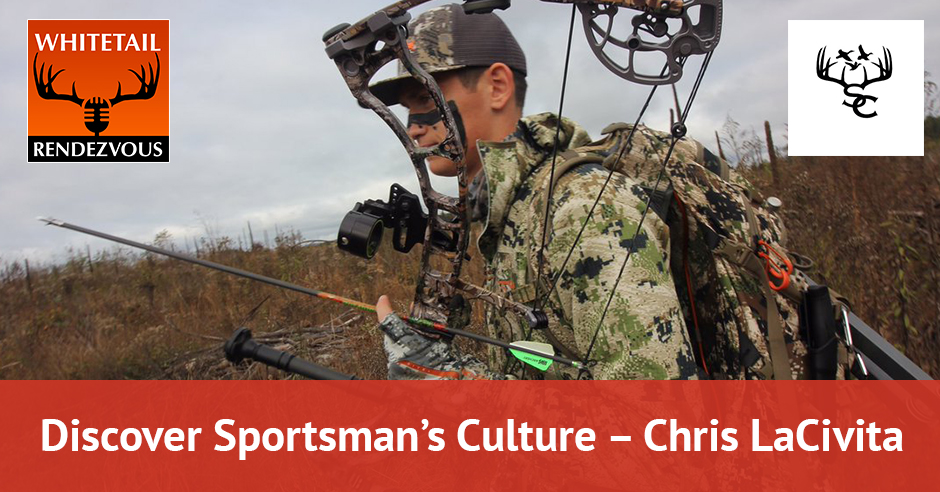
Everyone knows that the outdoor industry is enormous these days, and one of the ways you can showcase it is through social media. Sportsman’s Culture aims to show people the realities of a hunt and the struggles and challenges of a hunter, as well as to create a community of outdoorsmen and conservationists. Owner Chris LaCivita tells the story of how he was able to get the rights of Sportsman’s Culture a year ago and has grown a following of 24,000 with Instagram as their main platform. Along with his high school friends, Chris is now focusing on developing a website and creating a brand where they can build a relationship with people.
—
listen to the podcast here:
Discover Sportsman’s Culture – Chris LaCivita
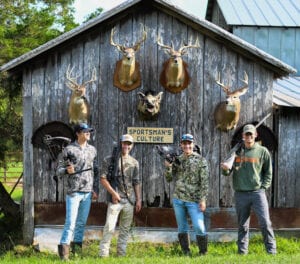 I’m happy to be heading east and to catch Chris LaCivita before he goes to Virginia Tech. He’s going to be studying business there. This show is not about a college student going away and leaving guns and fishing rods at home. It’s about Sportsman’s Culture, why that began and what Chris and the crew are thinking about as they go through their college experience because they’re going to build Sportsman’s Culture out. Hopefully, it will turn into something that will be a career for them. Chris, welcome to the show. I’m excited to hear about the hunting, the fishing and the catching of those fishes offshore. You guys have been busy for the last several years.
I’m happy to be heading east and to catch Chris LaCivita before he goes to Virginia Tech. He’s going to be studying business there. This show is not about a college student going away and leaving guns and fishing rods at home. It’s about Sportsman’s Culture, why that began and what Chris and the crew are thinking about as they go through their college experience because they’re going to build Sportsman’s Culture out. Hopefully, it will turn into something that will be a career for them. Chris, welcome to the show. I’m excited to hear about the hunting, the fishing and the catching of those fishes offshore. You guys have been busy for the last several years.
I’ve only been hunting for a couple of years. I started hunting when I was ten. My dad introduced it to me and he hadn’t been a big hunter his entire life. It was after he was out of the Marines. He wanted to find something to do that he enjoyed and he got me into hunting. In these past years, I’ve grown as a hunter and as a conservationist, and I love every part of it. Sportsman’s Culture was something I started a year ago. Around 2014 or 2015 is when I started to get big on Instagram. I saw these other pages that are trying to make these small Instagram businesses based on the hunting, fishing and the outdoors.
The first one I had was called Fishing Daily and that was all about fishing. It was all I wanted to do and then slowly that changed to Eastern Pursuit, which was one I’ve had. I grew that to about 4,000 followers and then I had the opportunity, another guy that I worked with, we’re Instagram partners. That was the type of deal we had. He said, “I don’t want to do this anymore. You can have my Instagram page and you can grow it and do whatever you want with it.” He gave me the rights to it and I said, “I’m going to start Sportsman’s Culture. It’s a great name and try to make it into a business and a brand for the outdoors.”
Who are the members of the team? Talk to me about your team members.
We need to have a strong foundation before we can get to where we are going. Share on XI have four other team members. Three of them are very close friends of mine I went to school with. I have Kendall Dreyer, Will Potter, Jake Schattner and then Ryan Kruger. Jake and Kendall went to high school with me. They’ve been hunting around the same amount of time as I have. When you go to a high school, especially the way society is and you’re able to find a couple of people that enjoy the same thing you do, hunting and fishing, you get close with them. We’ve been hunting, fishing and filming everything since sophomore year of high school.
When the opportunity for Sportsman’s Culture came along, they were all about it. They want to hunt fish and do everything we can to show other people and viewers more about the struggles and the challenges that actual hunters or common people have. The outdoor industry everyone knows is huge. The outdoor television only seems like it’s a whole advertisement the entire time and we want to show other people the realities of a hunt, all my team members do. The meaning is in the name itself, Sportsman’s Culture.
When you look at what you’re trying to do, you’re saying, “Here’s the reality of it.” We all know there are a lot of great shows on Sportsman Channel and Pursuit Channel.
Outdoor Channel.
You think of CarbonTV and Gen7 TV, there’s a proliferation of it. Why do you think you can gain traction with your tribe, with your viewers?
We want to create a community of outdoorsmen and conservationists. We’re in the process and we’re young. We have all the trademark and all that stuff behind us now. We’re focusing on building a website and we want to have a forum on there, where people can feel like they’re connected with us and that they have a relationship with us. It’s not that all those bigger hunting shows. I know they have a lot of these things but from the feedback I’ve already had on Instagram, we have 24,000 followers. That’s our main platform.
How did you get 24,000 followers?
How it started was the page had some followers already on it because I partnered with the page before. Eastern Pursuit was the first one and Sportsman’s Culture was the other one. When my buddy said, “I don’t want this anymore. You can have it,” he gave me Sportsman’s Culture. Before, it was a page where people would send in photos of stuff they had killed or caught. I wanted to create it into a business. The second I was able to do that, it shot off. I still like to keep the part where people are sending photos and whatnot to us but we’re trying to create a relationship with our followers, our community where they feel like they’re involved as well.
Twenty-four thousand followers on Instagram is significant. How did you specifically do that to get followers to say they want to follow you?
There are a lot of different strategies that people use.
Social media can help you grow a business, an idea, a tribe, no matter who you are, no matter how old you are, that’s necessity, dollars or whatever. You can build a tribe on that. It’s a matter of figuring out and getting it to work. That’s what I love about social media. Here I am, a mature gentleman, Chris’ grandfather’s age but we’re still talking because we’ve reached common ground. Let’s go back to the beginnings. We talked about the beginnings of your group, Sportsman’s Culture. What do you want it to become? I heard some of it, you want it to become a place where people like you and me, hunting, fishing and doing things in the outdoors. Talk to me about the business part.
We are in the process of creating a brand. That’s what we want Sportsman’s Culture to be. If you go around all these hunting shops, Bass Pro, Cabela’s, all these places, you’ll see all types of different brands with their apparel sold in these stores. The way we’re looking at it, we’ve got a couple of years of a lot of dirty work we have to do to get there. We have to build through networking. We need to have a strong foundation before we can get there and we’re starting to do apparel. I didn’t mention this but we do have four other companies that we work with. Sigma Outdoors, which is a scent company out of New York, Phone Skope, Deer:30 Mineral, which has some of the best minerals I’ve used, and BearHug Ratchet Straps.
We do advertisements as well with them like any other hunting show on the Outdoor Channel you see but on the business standpoint, we want a community of outdoorsmen and conservationists that are repping our apparel around the country. We also want to have a strong footing here locally. We’re based out of Richmond, Virginia and there’s a ton of outdoorsmen around here and a ton of people that like to hunt. We want to be known within the community. I’m talking about, possibly, somewhere down the road maybe we’re going to start guiding some hunts, duck-hunting-wise. Also, talking about maybe starting some archery shoots at some of the farms that we have and making it a whole community thing but having the business side of it as selling apparel and doing work for other companies advertisement-wise.
I should talk to you about Buck Wild Coffee. I know there are a lot of coffee companies out there but I have a brand called Buck Wild Coffee. We’ll talk about that because everybody drinks coffee.
Every morning before we hunt, it’s a pot of coffee. It’s how it has to be.
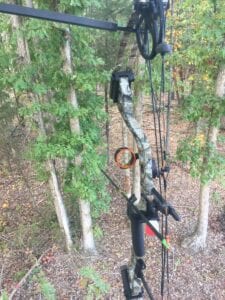 I’m always looking for people to get involved in that and to figure out what we’re going to do with that. Let’s talk about why you hunt because a lot of people don’t want you to hunt. They’re in-your-face-don’t-want-you-to-hunt. They think hunting is gross or other adjectives as you want to throw it out, but yet there you are with your buddies at Sportsman’s Culture and you’re hunters. Why is that?
I’m always looking for people to get involved in that and to figure out what we’re going to do with that. Let’s talk about why you hunt because a lot of people don’t want you to hunt. They’re in-your-face-don’t-want-you-to-hunt. They think hunting is gross or other adjectives as you want to throw it out, but yet there you are with your buddies at Sportsman’s Culture and you’re hunters. Why is that?
Especially the way society is and you’ve got many people that are anti-gun, anti-hunting, all this stuff. You go back several years, it wasn’t a big deal when people would show up to school with a dead deer in the back of their truck and the guns in the rack of their trucks. It was tradition back then. Honestly, when my dad got me started into it when I was ten and with all my buddies when they got started into it, a big part of why we hunt is because our parents told us these stories about hunting. It ingrains something into you through the experiences that you have while you’re out in the woods that make you want to continue hunting and to keep that tradition going. We have a love for the outdoors like every other sportsman. I honestly don’t know what I would be doing if I couldn’t hunt because of the amount of joy and excitement that I know it brings me, my friends and my family. It’s better than anything else.
You find joy in it but let’s get down to it. Let’s talk about when you go duck hunting. You set off the DICK’S in the early morning and then you’re sitting, it’s wet, moist and windy. You’re sitting there waiting for the sun to come up. What does that mean to you?
Some people think you’re crazy. I’ve had people telling me I’m crazy when I’m out there breaking ice and waders duck hunting. It’s a sense of peace. Everything is loud and to find something you love like that and quiet, except when all the shooting starts. Not just duck hunting but sitting in a tree stand, you have much time to reflect. I don’t think that’s something that we get to do very often and it’s special. It’s not like anything else and it’s something that I want in the future to be able to pass on to my kids and my family.
The amount of joy and excitement that comes from within is better than anything else. Share on XI think about duck hunting, setting up, shooting my limit and leaving my DICK’S in there. As it gets darker and darker, web feet down and they’re working the decoys, they come splashing in, they start chuckling and feeding. You can’t capture that on film. You can’t do that.
When it’s happening, nothing else in the world matters. The only thing that matters is that duck is going to come into your spread and you’re going to shoot them or not even shoot them. Get the opportunity to watch them work. It’s hard to explain to other people, especially when you got non-hunters that are saying, “How do you enjoy doing this? How do you enjoy hunting?” You’re like, “I don’t know.” It’s something that you and I can only talk to each other and other sportsmen. There’s something about it and some people go out and they’re like, “I want to shoot my limit and if I don’t shoot my limit, it’s a bad day.” Here in Virginia, we barely shoot limits. It’s not the Midwest where you’ve got thousands of geese and mallards coming in. We go back to the swamp, we kill a couple of wood ducks and we are completely satisfied because it’s another day we can hunt and have fun.
I’m thinking of some of the places I’ve been fortunate to hunt, especially up in Canada, where one time the guy told us, “It was about 20,000 to 25,000 snow geese above your head right now.” The sun is coming up and they’re making all sorts of racket, they’re in tornado mode and I’m living it. That’s the thing that I wish we could articulate to the non-hunters. Don’t even take a gun, come with me, go to those wheat fields and lay out in the blind. First of all, you’re going to set up a gazillion decoys, then you sit back, have your cup of coffee and all of a sudden, the sun starts to come up and game on. To experience that and I liked how you said, “There’s much noise,” and we can’t get away from it because we have our cellphones with us at all times and earbuds in. Here we are a couple of guys saying, “Why don’t you go and sit in the wet marsh with your dog, throw out some DICK’S and sit there for a couple of hours? See what happens and see how the earth around you works.” I wish we could articulate that better.
I know what you meant. I wish we could show that better to the world but in Sportsman’s Culture, that’s something we want to do through film. We don’t have the most expensive cameras and all this stuff but it’s much more than the hunt. The hunt’s the bulk of it but it’s being able to show people waking up in the morning, getting a cup of coffee, the side talks you have before, the excitement that goes into it, throwing out the DICK’S in the cold and the conversation you have while you’re in the blind. The joy and the happiness after the hunt, we want to be able to wrap all that together and show it to people. Show them that it’s not about the killing. It’s about everything else that goes into hunting. That’s the meaning of Sportsman’s Culture itself.
Let’s switch it up and talk about what do you love better, hunting turkeys or hunting whitetails?
I’ll have to go with turkeys. I love early deer season, doe hunting. There’s something about getting into the woods, end of October or early November. It’s crisp. It’s not too cold and the bucks are chasing does or scrapes or rubs, and it’s the best. That’s the best thing ever. Nothing is better than that especially here in Virginia, we don’t have the luxury of having all these giant bucks everywhere. The way I grew up to it, your best time to hunt like everywhere else is that small period during the rut but then we get dog hunters. They run their dogs through and the rest of the season, the last month and a half is blown out. You won’t see a deer because there are dogs running everywhere.
When turkey season comes, I feel like there’s nothing better than you’re waking up, you hit that owl call and then the pines, the woods, everything explodes and birds gobbling. I like turkey hunting more because it’s running gun and it’s constant compared to sitting on a stand and waiting. You’re always on your feet and you can hear that bird coming in and coming in. When they display for you, it’s beautiful and there’s something about killing a turkey, shooting a turkey after chasing one all day or chasing one all season. You feel very successful about it.
Talk to me about chasing turkeys. The only turkey I hunted is out of a blind and set up. You get the tom or jake and a hen out there as decoys and then somebody’s calling them in. They display and game over, you shoot them but running and gunning with turkeys is a little bit different. Explain that to me.
I know out west that is a big thing sitting in your blinds because it is a lot more open, especially in different places. I’ve hunted out of a blind before but running and gunning, this is how I learned to turkey hunt and it’s how my buddies did. You locate a bird, when you hear that bird, you get as close as possible without spooking them and set up. If you know your surroundings, it’s better, you know where he might get hung up. You work that bird for an hour or so and usually, they’ll shut up. You sit there and you wait. You bring a turkey vest and sit down on a tree. After he shuts up, about 30 to 40 minutes or calling every ten minutes, some yelps purring a little. If he doesn’t show up, he’s moved on and he’s found a hen and then we go on to locate another bird. I was in school, I could only hunt on the weekends for turkeys and we killed three birds by running and gunning. I feel a sense of excitement to it because you’re constantly chasing that bird and setting up. Someone’s pointing out, he’s gobbling that way, now he’s gobbling that way and it’s pure chaos when you have a ton of birds around. It’s a whole lot of fun.
Do you find a tree, put your back up and put the decoys out?
Yeah, we do that, too. We do put decoys out. Sometimes it depends, though, because we’ll have birds come in, they’ll look at the decoy and they’re gone. They don’t like it. The second day of the season, I called in a bird and he came sprinting down a hill. The second he saw the decoy, he went right back up the hill and he was gone. Sometimes I wish I could know what that bird is thinking because you think it’s going to be perfect and then everything falls apart. The first bird we killed was with a decoy and the last two birds were not. They came into the calling. Sometimes, when they see the decoy, they can get hung up and they won’t come to the shooting range, compared to when you’re calling and they can’t find the bird. They’re going to be a little more curious. They’re going to try to get as close as possible and then you’re able to shoot one. When you’re running and gunning, I prefer not to use a decoy but I always keep one on me in case.
Why don’t you run-and-gun on whitetails?
It’s completely different. Around here, you’ve got a lot of oaks, acorns and you know where they’re going to be feeding. We can’t bait in Virginia. A lot of scouting goes into it. It’s mostly oaks, mountains and pines. If you go walking around through the woods with a gun, you’re not going to see a deer because they’ll smell you before you’re there or they’ll hear you. We have to play the wind right and hope one comes by through our scouting, putting out trail cameras and everything that goes into it.
The run-and-gun technique is that you’re in an observation stand. You know the deer are there and you’re waiting to pat out of them no matter, pre-rut, chasing phase, seeking phase, the actual rut and post. You’re trying to figure it out and you take your hang on. You go to where they are because the more I talked to guys like you and people that are good deer hunters, they say they get about three sets on one deer. If they blow that, then they get a go find another deer. What’s your thought about that?
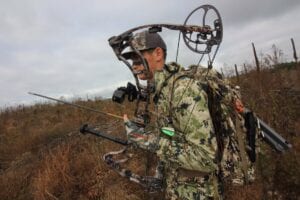 I do believe that. I do take a climber with me. The majority of the hunting I did was in a climber. You can call that running and gunning in a way. We have our designated ladder stands but if we get pictures of a buck and we know he’s using this area you can’t go into that one spot every single day because they’re going to know. The winds are not going to be the same every day. You’ve got to play the wind right because if you don’t and that buck smells you once, there’s a pretty good chance he’s not going to be coming back to that spot during the day. He’s going to become nocturnal.
I do believe that. I do take a climber with me. The majority of the hunting I did was in a climber. You can call that running and gunning in a way. We have our designated ladder stands but if we get pictures of a buck and we know he’s using this area you can’t go into that one spot every single day because they’re going to know. The winds are not going to be the same every day. You’ve got to play the wind right because if you don’t and that buck smells you once, there’s a pretty good chance he’s not going to be coming back to that spot during the day. He’s going to become nocturnal.
One of the things that we struggle with here in Virginia, we have dog hunters. Once December rolls in and it’s gun season, the dog hunters will run their dogs through everyone’s property. It’s perfectly legal as long as they’re hunting on their property, they can run their dogs through someone else’s property. It makes all the deer nocturnal. For us, we have that small gap of doe season and muzzleloader season to get a couple sits in on that nice buck to shoot them because once gun season rolls around, it’s most likely not going to happen.
Explain to me, as long as I’m on my 100 acres, that’s where the dogs are going to run the deer back, my dogs can run the whole township and chase the deer back to my 100 acres. Is that what you’re saying?
Not exactly because a dog can go wherever he wants to. I have a hunt in Buckingham County. We have 3,000 acres there where we hunt and we’re a sit-only stand-only hunt club. All the hunt clubs around us run dogs. Our main properties might be 1,000 acres but they are surrounded by other hunt clubs. What they’ll do is line up almost in a circle on their property with a gun. They’ll sit down in a chair and it’s perfectly legal. They’re sitting on their property. They’ll be on the other side and they’ll release dogs. Those dogs will run straight through the property.
Whatever makes people happy, and if they’re able to do it safely and responsibly, then that’s all that matters. Share on XSometimes, they don’t and they get on a deer. They’ll chase that deer all the way until they cross the road and they get onto their property, where they can shoot it. There are some hunt clubs that do that. Not every hunt club will do that. The Virginia Dog Hunting Association is a big part of Virginia and I’m not saying anything bad about it because the majority of the dog hunters do it right. They run through their property and they kill a lot of nice deer but it’s when they start to cross the boundaries that it can get difficult for stand hunters.
If my neighbors are running dogs through my property, then every single deer in there is gone.
That’s happened and it becomes a wasteland almost. I’ve had times in December and it’s cold. I won’t see a deer for a week because I constantly hear the dogs. The dog hunters will say, “No, I didn’t mean to run through your property.” Most of the time they’re not. It could be that they’re running a dog on their property and that dog got a sniff. He chased the deer that was on their property through our property. While he was running, he got on the trail of a deer on our property and he ends up taking a whole herd off. There’s nothing we can do about that because it’s a dog and he’s trying to follow the trail to wherever it ends. That’s how it is in Virginia.
The hunting tradition is hundreds of years old. You’re probably not going to change that, maybe you should. I’ve never hunted deer over dogs but it would be cool. I’m not sure if I’d like my dogs running through someone else’s property. That’s in Virginia. That’s not out west or that’s not in different areas. You’ve got to go with the tradition that’s there.
That’s what makes it tough but it also makes it a lot more rewarding when you can shoot a big buck here in Virginia. Knowing that you’re only going to get a couple of chances of shooting that deer and you’re able to do it, especially when during December, it makes it very rewarding but it’s how it goes. Some states, North Carolina has it, where there are only select counties where you can run dogs and certain counties, they’ll preserve to only gun hunting. In West Virginia, for example, they started doe-hunting-only counties and from a conservation standpoint, that’s a good thing. Those deer are going to have a chance to get bigger and they’re not going to be as pressured as hard compared to having dogs running through the property the whole time.
When I started hunting in Wisconsin, we had ten to fifteen guys driving and we had five or six standers. We drive farm after farm and that’s the way it was.
When it comes to the middle of the winter, sometimes, you have to do that. If you’re meat hunting, we do plenty of that, to shoot a doe, you have to do those man drives or sometimes run dogs. That’s a lot of fun, too.
Someday I’d like to observe it and be part of it. I mentioned about the one big thing that you wish you knew five years ago that you know now and how that would have made you a better hunter.
Definitely patience. I didn’t have a whole lot of experience hunting. My dad would usually hunt with me still. It wasn’t until I was about fourteen years old that I started to hunt by myself. Patience would be the biggest thing. Many times I’ve gotten out of the stand because I’m cold or something. I’m like, “I’m going to go back to the camp and eat lunch.” I’ll be walking out and a buck will come walking through the pipeline that we have. I’m like, “Of course, this happens. If I stay in the stand for five more minutes, I would’ve shot that deer.” The same applies to duck hunting. It happened to us plenty of times. We get up to go get breakfast mid-morning, then here comes a whole flock of geese flying in. Patience is something that if I’ve had more of it when I was younger, I would have been more successful but as I’m getting older, I’m learning a lot. The last few seasons have been great for me.
How have they been great?
Before I answer that, patience also in turkey hunting, that’s where it comes into play because you have to wait on that bird to come in. The last few years have been pretty successful. We’ve killed some nice bucks and a lot of turkeys. The reason we killed a lot of turkeys is that we were patient with our calling. We knew that the bird was going to come in. From calling in turkeys, for a couple of years, you start to learn when you need to call and when you don’t need to call. The last couple of years, we’ve shot some nice bucks and killed some nice turkeys. We’ve limited out on ducks before. I’ve only been hunting for several years. I haven’t completely experienced that yet. For me, it’s been good the last couple of years hunting-wise.
You think about Sportsman’s Culture, how are you going to use that as a recruiting tool? The hunting public is getting older. You’re a rarity and that’s why I’m glad to have you on the show because we need not hundreds, not thousands but millions of guys like you. How are you going to use Sportsman’s Culture to help generate interest in hunting?
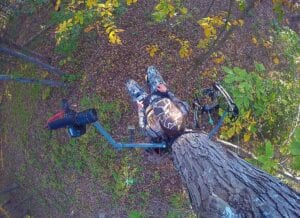 I’ll give you an example. By creating a community through Instagram, there are a lot of younger people there. All it takes is for one kid to click on a hunting page or a conservation page, outdoors page and be like, “I want to do that.” I’ve had people that are sending messages on Instagram. They shot their first deer and all they want me to do is post it for them so they can show other people. That’s great. Being able to do things like that creates a foundation for people to keep hunting for the rest of their lives. I’ve also thought, somewhere down the road, maybe you see a lot of these hunting shows that do charity hunts or make their own foundation or something like that. That’s something I’m interested in doing a couple of years from now. If this becomes something, I would love to be able to give back to others and have them experience the same excitement and enjoyment that we get out of hunting.
I’ll give you an example. By creating a community through Instagram, there are a lot of younger people there. All it takes is for one kid to click on a hunting page or a conservation page, outdoors page and be like, “I want to do that.” I’ve had people that are sending messages on Instagram. They shot their first deer and all they want me to do is post it for them so they can show other people. That’s great. Being able to do things like that creates a foundation for people to keep hunting for the rest of their lives. I’ve also thought, somewhere down the road, maybe you see a lot of these hunting shows that do charity hunts or make their own foundation or something like that. That’s something I’m interested in doing a couple of years from now. If this becomes something, I would love to be able to give back to others and have them experience the same excitement and enjoyment that we get out of hunting.
The future of hunting is in your hand and it rests in social media and how we are all in the same common ground. What are your thoughts about when somebody says, “I wouldn’t have shot that deer?” They’re negative. “Leave it.” How do you handle that?
I’ve gotten that type of feedback before in my page, where they’re like, “That’s a small buck. I would not have shot that deer. You need your deer to mature more or whatnot.” Honestly, that’s one of the risks of social media. There are always going to be negative people out there that are going to be hating on the things that you like to do, even if they share the same interests. That’s one of the things about social media that isn’t the best because anyone can comment and anyone can share what they want. Every single person that’s been raised in hunting has a different view of it, the way they are raised in hunting. Some people, they shoot smaller bucks because they’re meat hunters and that’s what they want to do. Some people, they’re all about trophy hunting. Conservation and trophy hunting, all that is great for deer but whatever makes people happy and if they’re able to do it safely and responsibly, then that’s all that matters. There’s always going to be people that are going to be negative about it but whatever makes that person hunting that keeps them hunting is the most important thing.
Thanks for sharing that. Any last words?
Thank you, Bruce, for inviting me. You’ve reached out to me on social media. Before this, I haven’t done a podcast or any type of interview before. This is a great way to get started. For everyone, Bruce is a great guy. This podcast is new to me but it’s something that you guys should check out on iTunes, pick them out on Facebook and Instagram. Hopefully, it will keep on growing and we can keep on sharing hunting in the outdoors and show other people what we love about it.
Chris, this has been a pleasure. On behalf of hundreds of thousands of people across North America, you’re what’s right with hunting and with Sportsman’s Culture, you get a big future. I appreciate your comments.
Thank you, sir.
important Links:
- Sportsman’s Culture
- Sigma Outdoors
- Phone Skope
- Deer:30 Mineral
- BearHug Ratchet Straps
- Buck Wild Coffee
- iTunes – Whitetail Rendezvous
- Facebook – Whitetail Rendezvous
- Instagram – Whitetail Rendezvous
About Sportsman’s culture
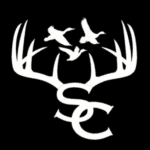 Sportsman’s Culture is an outdoor brand dedicated to the heritage, conservation, and life of a sportsman. We strive to create videos that relate to, educate and inspire the average sportsman.
Sportsman’s Culture is an outdoor brand dedicated to the heritage, conservation, and life of a sportsman. We strive to create videos that relate to, educate and inspire the average sportsman.
